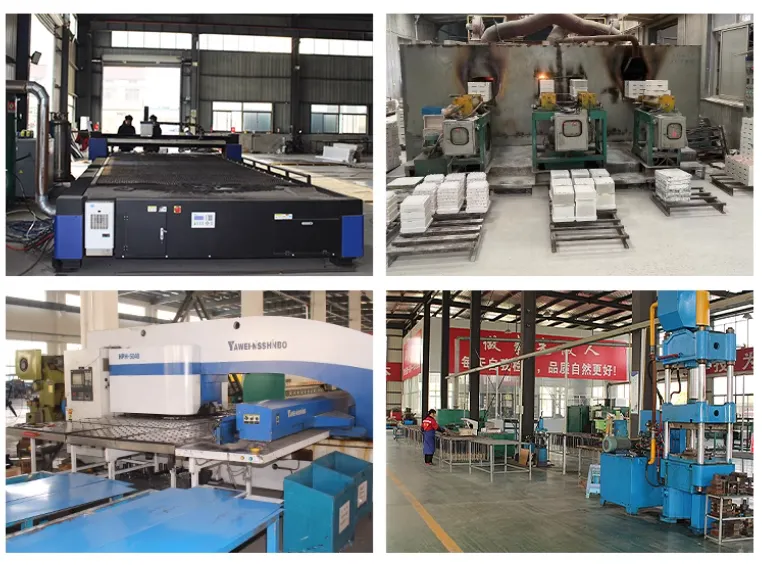Discover Premium Ceramic Products | Durability & Elegance United | Advanced Ceramics
1. Introduction
When it comes to high-temperature processing in metallurgy, glassmaking, or semiconductor manufacturing, the choice of crucible material can make or break your operation. Among the top contenders are silicon carbide crucibles and their close relative, silicon nitride crucibles. Both offer exceptional thermal stability—but they’re not interchangeable.

In this deep dive, we’ll compare these two advanced ceramics, unpack their unique advantages, and explore how silicon carbide’s versatility extends far beyond crucibles into everything from baking dishes to industrial piping. We’ll also touch on how silicon carbide stacks up against boron carbide and why certain applications demand one over the other.
2. Silicon Carbide Crucibles: The Workhorse of High-Temperature Applications
2.1. Material Properties and Manufacturing
Silicon carbide (SiC) is a compound of silicon and carbon known for its extreme hardness, high thermal conductivity, and resistance to thermal shock. A silicon carbide crucible is typically made by sintering fine SiC powder with binders or through reaction bonding (RBSiC).
RBSiC silicon carbide tile blocks, for instance, are created by infiltrating porous carbon preforms with molten silicon—resulting in a dense, strong structure ideal for crucibles and furnace linings.
2.2. Performance Advantages
- Excellent thermal shock resistance (can handle rapid heating/cooling cycles)
- High thermal conductivity (heats evenly, reduces energy waste)
- Chemical inertness against molten metals like aluminum, copper, and zinc
- Long service life compared to graphite or clay-graphite crucibles
However, silicon carbide can oxidize above 1,400°C in air, forming a silica layer that may degrade performance over time—something to consider in prolonged high-oxygen environments.
3. Silicon Nitride Crucibles: The Precision Alternative
3.1. Composition and Fabrication

Silicon nitride (Si3N4) is another advanced ceramic, prized for its strength, fracture toughness, and stability in oxidizing atmospheres. Unlike silicon carbide, silicon nitride crucibles are usually pressure-sintered or gas-pressure sintered to achieve full density.
Specialized producers, often labeled as a ‘silicon nitride crucible factory,’ tailor these crucibles for ultra-high-purity applications—like rare earth metal melting or semiconductor crystal growth.
3.2. When to Choose Silicon Nitride
Silicon nitride excels where minimal contamination is critical. It doesn’t react with many reactive metals (e.g., titanium, zirconium) and maintains integrity up to 1,800°C in air.
Custom silicon nitride heat shields, silicon nitride rings, and silicon nitride plates are common in aerospace and electronics—areas where reliability trumps cost.
But it’s more expensive and less thermally conductive than silicon carbide, making it less ideal for bulk metal melting.
4. Boron Carbide vs. Silicon Carbide: A Quick Comparison
While not typically used for crucibles, boron carbide (B4C) is worth mentioning. It’s harder than silicon carbide and used in armor and abrasives—but it’s brittle, expensive, and reacts with many molten metals.
For crucible applications, silicon carbide wins on cost, manufacturability, and thermal performance. Boron carbide remains niche.

5. Beyond Crucibles: The Expanding Universe of Silicon Carbide Ceramics
Silicon carbide’s utility isn’t limited to industrial vessels. Its durability and aesthetic appeal have spurred consumer and architectural uses.
5.1. Kitchenware and Tableware
Products like silicon carbide ceramic baking dishes, silicon carbide ceramic dinner plates, and silicon carbide ceramic serving bowls are gaining traction. Brands even offer silicon carbide baking dish Staub-style cookware.
You’ll find silicon carbide white ceramic plates, black ceramic plates, and even holiday-themed items like silicon carbide Christmas ceramic platters. These combine heat retention with scratch resistance—ideal for oven-to-table serving.
5.2. Industrial Components
From silicon carbide burner nozzles and silicon carbide bricks to silicon carbide ceramic columns and silicon carbide tubes, this material dominates high-wear zones.
Silicon carbide thermocouple protection tubes and silicon carbide ceramic tubes for furnaces handle extreme temps without warping. Meanwhile, silicon carbide porous ceramic tubes are used in filtration systems.
Even plumbing benefits: silicon carbide ceramic disc taps and silicon carbide ceramic disk for tap mechanisms offer leak-free, long-lasting performance.
5.3. Specialty Forms
Silicon carbide discs—whether grinding, sanding, or piezoelectric—are essential in manufacturing. Silicon carbide diamond grinding discs for pottery help shape tough ceramics, while silicon carbide piezo ceramic discs enable sensors and actuators.
And yes, even silicon carbide ceramic ramekins and silicon carbide ceramic butter dishes with lids exist—blending function with modern design.
6. Conclusion
Choosing between a silicon carbide crucible and a silicon nitride crucible depends on your specific needs: cost, temperature, atmosphere, and purity requirements. Silicon carbide offers unmatched thermal performance for most industrial melting tasks, while silicon nitride shines in ultra-clean, high-stress environments.
Meanwhile, silicon carbide’s adaptability—from furnace linings to dinnerware—cements its status as a cornerstone of modern ceramics. Whether you’re casting aluminum or serving pie, there’s likely a silicon carbide ceramic solution engineered for the job.
Our Website founded on October 17, 2012, is a high-tech enterprise committed to the research and development, production, processing, sales and technical services of ceramic relative materials such as Silicon. Our products includes but not limited to Boron Carbide Ceramic Products, Boron Nitride Ceramic Products, Silicon Carbide Ceramic Products, Silicon Nitride Ceramic Products, Zirconium Dioxide Ceramic Products, etc. If you are interested, please feel free to contact us.
